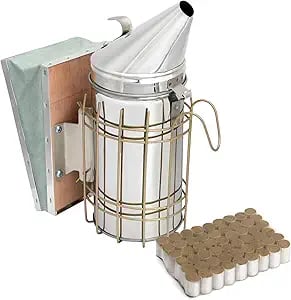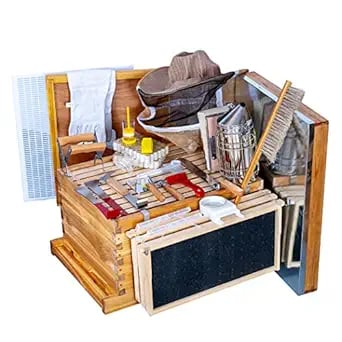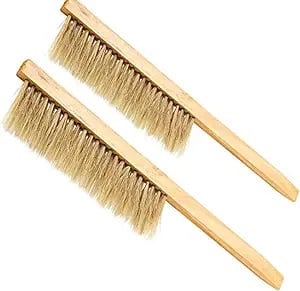How to Catch a Swarm of Honeybees: Step-by-Step Guide
How to Catch a Swarm of Honeybees: Follow our step-by-step guide and safely on gear, safety tips, and proven methods to secure your own thriving colony now.
BEE KEEPING
As an Amazon Associate, I earn from qualifying purchases. This means I may earn a commission if you click on an affiliate link and make a purchase, at no extra cost to you.


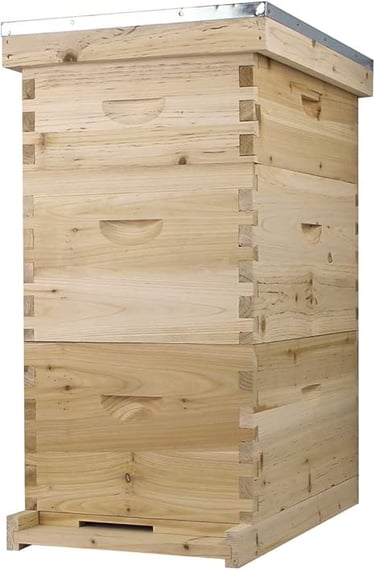

Bee Hive Complete with Frames & Wax Coated Foundations (NU8-2D1M)


Three Layer Mesh Ventilated Beekeeping Suit, Beekeeper Suit with Fencing & Round Brim Hat, Comfortable, Sting proof Anti Wasp Suit

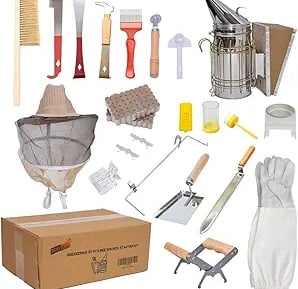
Ready Hour, Emergency Meal Entrées, Real Non-Perishable Meals, 25-Year Shelf Life, Portable Flood-Safe Container, 120 Servings
Catching a swarm of honeybees can be one of the most thrilling experiences for a beekeeper—whether you’re a newbie or a seasoned pro. Swarming is a natural process in which an existing colony forms a new home, often leaving the old hive with about half of the worker bees and the original queen. If you’re prepared with the right equipment and information, you can safely collect this swarm and grow your apiary in a highly sustainable way.
Why Do Honeybees Swarm?
Swarming usually takes place when a hive becomes overcrowded, or when the queen’s pheromone levels start to drop, signaling that it’s time to create a new queen. The old queen then leaves the colony with a large group of worker bees to find a new home. This is when beekeepers have a golden opportunity to capture a ready-made colony of foraging bees and a proven queen.
1. Prepare Your Swarm-Catching Toolkit
Gathering the correct tools in advance is crucial. Here’s what you’ll need:
Protective Gear: A full bee suit, gloves, and a veil will help protect you from unexpected stings.
Catch-Box or Nucleus Hive: This will be the temporary home for your swarm until you can transfer them to a permanent hive.
White Sheet: A simple sheet on the ground can help funnel bees toward your box.
Queen Clip: Safely capture and secure the queen.
Pruning Shears: Snip small branches if the swarm is clustered on foliage.
Ladder: Only if the swarm is perched out of easy reach.
Spray Bottle with Sugar Water: Calms bees by distracting them with grooming and feeding.
Lemongrass Oil or Swarm Lure: Mimics the aroma of queen pheromones, enticing the swarm to stay in your box.
Tip: Always keep your gear in good condition. Double-check that your veil and suit are free of rips or tears before you approach any swarm.
2. Finding a Honeybee Swarm
Where can swarms pop up? You might find them:
Hanging on Tree Limbs
Clinging to Fence Posts or Mailboxes
Clusters on Walls, Eaves, or Roof Overhangs
Even in Unusual Places, Like Bicycle Racks or Bushes
Local beekeeping associations often organize “swarm hotlines” or “swarm lists.” By joining these, you can be notified when someone reports a swarm in your area—handy for beekeepers looking to expand their colonies or help out neighbors who stumble upon a swarm.
Resource:
3. Different Methods to Catch a Swarm
3.1 The White Sheet Method
Great for low-hanging or easily accessible swarms.
Spread a white sheet on the ground under the swarm.
Position your catch-box or nucleus hive at one end of the sheet.
Gently shake or brush the bees onto the sheet—most will naturally march toward the box, especially if the queen is inside or close by.
Keep an eye out for the queen!
3.2 Clip and Lower Method
Ideal for small or flexible branches.
Carefully clip the branch where the swarm is clustered.
Gently lower the entire branch into your catch-box.
If you use a Langstroth or Warre hive, place the swarm directly on top of the frames.
3.3 Shake Method
Best for thicker, higher branches.
Position your catch-box underneath the swarm.
Firmly shake the branch so the cluster of bees falls into the box.
Expect some bees to fly around, but most will gravitate to the queen once she’s inside.
3.4 Scoop Method
Works well if the swarm is on a flat surface.
Using your bee brush or gloved hand, gently scoop bees into your box.
Keep doing this until the bulk of the cluster is in the box.
Monitor for the queen so you know she’s safe inside.
4. Securing the Queen
The queen’s presence is critical—where she goes, the swarm follows. She’s slightly bigger than the worker bees and may move more deliberately. Once you see her:
Gently pick her up or guide her into a queen clip (or queen cage).
Place the clip or cage between two central frames in your catch-box or nucleus hive.
Tip: Move slowly and calmly. If the queen is disturbed or injured, the swarm may disperse or become defensive.
Resource:
5. Encourage the Swarm to Stay
To boost the odds that your swarm remains in your box:
Apply Lemongrass Oil or a Swarm Lure: These mimic queen pheromones, enticing the bees to settle.
Lightly Mist with Sugar Water: This keeps bees occupied with grooming, reducing flight and agitation.
Consider a Little Smoke: Gentle puffs from a bee smoker can guide bees into the box.
6. After the Capture
Let Stragglers Join: Leave the catch-box where it is for a few hours so remaining bees can locate the queen.
Transport at Dusk: By nightfall, most bees return to the cluster. Seal the entrance and carefully move them to your chosen location.
Transfer to a Permanent Hive: Within 24–48 hours, relocate the swarm to its new hive to give them space to establish comb and brood.
Resource:
FAQs 🐝
Q: Are swarms dangerous?
A: Swarming bees are often docile—they’re focused on finding a new home and have no nest to defend. Still, wear protective gear and approach with caution.
Q: When is the best time to catch a swarm?
A: Early morning or late evening is ideal, when bees are less active and more likely to stay clustered.
Q: How long does it take to catch a swarm?
A: It varies. Some swarms can be captured in under 15 minutes, while others might take a few hours depending on the bees’ temperament and environment.
Q: What if I can’t reach the swarm?
A: If the swarm is high up or in a risky spot (like under roof eaves or power lines), contact a professional or a more experienced beekeeper rather than risk injury.
Q: Do I need special permission?
A: Regulations differ by region. Check local bylaws—some areas may require permits or special permissions for swarm collection and apiary management.
Final Thoughts
Catching a swarm of honeybees is a fantastic way to expand your colony or help nature continue its pollination work. With the right gear, knowledge, and respect for the bees, you can safely capture and relocate a swarm to a suitable home. Remember, if you have any doubts—particularly about the swarm’s location or your own safety—reach out to local beekeepers or professionals who can lend a hand. Enjoy your beekeeping adventure!
If you liked this article, you'll love these,



